PYROSTEGIA
Pyrostegia
C. Presl, Abh. Konigl. Bohm. Ges. Wiss., ser. 5, 3: 523. 1845; Bailey, Stand. Cycl. Hort. 1919; Fl. Pak. @eFloras.org p.19.
Lianas, without dimorphic juvenile growth, without strong odour. Stems with phloem wedges in multiples of 4 in C.S., pith solid; branchlets hexagonal, glabrous to puberulous, without lenticels, without interpetiolar glands, with discontinuous interpetiolar ridge, with epidermis not peeling; prophylls of axillary buds triangular and minute, without glands. Leaves 2- or 3- foliate, terminal leaflet often replaced by a trifid tendril, tendrils without adhesive discs, without uncinate apices; leaflets chartaceous, with glands sparsely distributed over lamina or grouped in axil of veins, with pellucid punctations, without domatia, petiolules not articulated; petiole cylindrical. Inflorescence terminal or axillary, a drooping corymbiform cyme or raceme. Flowers bisexual, zygomorphic, pentamerous, hypogynous. Calyx cupulate, shortly 5-lobed, membranaceous, puberulent externally, without glands. Corolla orange-red or white, without nectar guides, narrowly tubular, tube straight, membranaceous, glabrous externally except puberulous on margins of lobes, without glands, lobes 5, valvate at base and imbricate above. Stamens 4, with well-developed filaments, exserted; anthers bithecous, glabrous, thecae straigh. Carpels 2, syncarpous; ovary sessile, smooth and lepidote externally, ovules in one series on each placenta, placentation axile; stigma rhombic, glabrous. Disc annular or pulviniform. Capsules linear, straight, coriaceous, valves 2, glabrous with lenticels, without glands, without wings, smooth, with calyx persistent. Seeds winged, with body smooth and glabrous, wings hyaline, linear.
2 species
Pyrostegia venusta
Pyrostegia venusta
(Ker Gawl.) Miers, Proc. Roy. Hort. Soc. London 3: 188. 1863; A Gentry, Fl. Ecuador 7: 124. 1977; Fl. Pak. @ eFloras.org p.19; Bignonia venusta Ker Gawl., Bot. Reg. 3, t. 249. 1801; Parker, For. Fl. Pun. ed. 1. 378. 1918 (Reprint 1973); Bor & Raizada, Climbers and Shrubs, 30. 1954; Tecoma venusta Lem., Hort. Universal 5: 1. 1843.
An evergreen shrub, climbing by means of tendrils. Lower leaves 3-foliate; upper leaves 2- foliate with a tendril between the leaflets. Tendrils long, coiled, 3-fid at the apex, each branch ending in a minute hook (3-clawed tendril); leaflets ca 4-9 cm x 3.5-4.5 cm, ovate to ovate-oblong, entire, acuminate, gland-dotted, base subcordate, 5-nerved. Petiolules ca 2.5 cm, as long as the common petiole. Bracts 1-1.5 mm long. Flowers bisexual, zygomorphic, pentamerous, hypogynous, 5-7.5 cm long, orange or orange-red, in terminal corymbose raceme. Calyx ca 5 mm long, campanulate, truncate with a 5-toothed rim, teeth minute, ca. 1 mm long, subulate, pubescent. Corolla 5-7.5 cm long; tube slender, ca 4.5 cm long, slightly curved upwards, basal part narrow cylindrical, ca. 3.5 mm broad, flares up abruptly becoming 1-1.2 cm across the throat; limb 2-lipped: upper lip ca. 1.6 cm x 1 cm, 2-lobed, lobes ca. 8 mm x 5 mm, triangular lanceolate; lower lip broad, 3-lobed, lobes spreading or recurved, oblong-lanceolate, equal, ca. 17 mm x 6 mm; all lobes tomentose with yellow hairs at margin and upper 1/3-1/2 apical part.. Stamens 4, longer than corolla tube, nearly equalling the upper lip; didynamous, filaments of longer stamens ca. 2.5 cm long and of shorter stamens ca. 2 cm long; anthers bithecous, 4-4.5 mm long, thecae slightly divaricate; staminode 1, antherless, small, ca. 3 mm long. Carpels 2, syncarpous; ovary sessile, ca. 5 mm long, linear, smooth and lepidote externally, 2-locular, ovules in one series on each placenta, placentation axile; disc pulviniform; style ca. 5 cm long; stigma 2-lobed, lobes flattened, ovate-rhombic, glabrous.
Capsules not observed.
Common Names: Flame Vine, Orange Trumpet vine, Flaming Trumpet, Golden Shower Trumpet
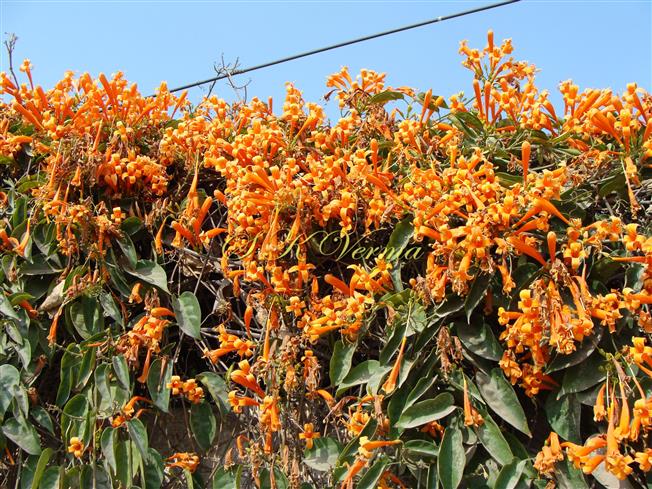
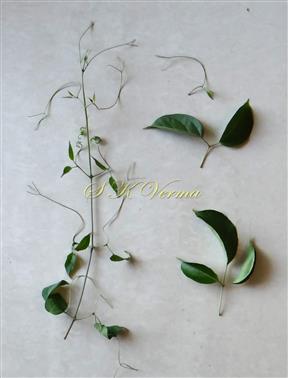
-DSC08249.jpg)
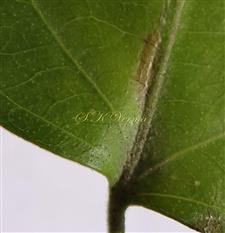
-DSC08252.jpg)
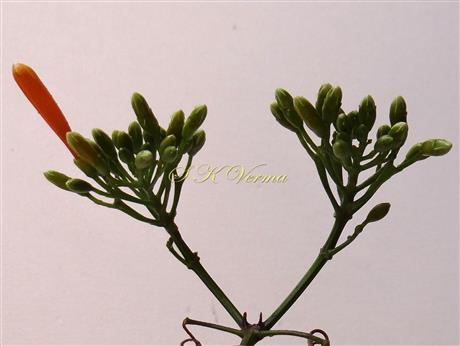
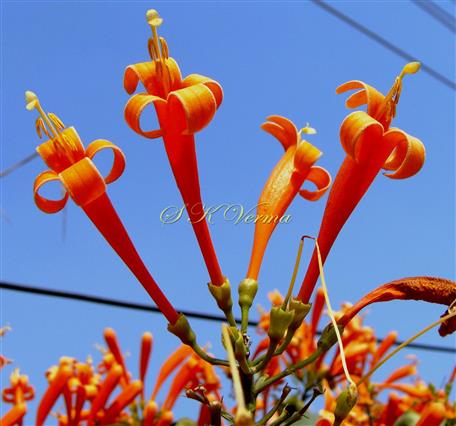
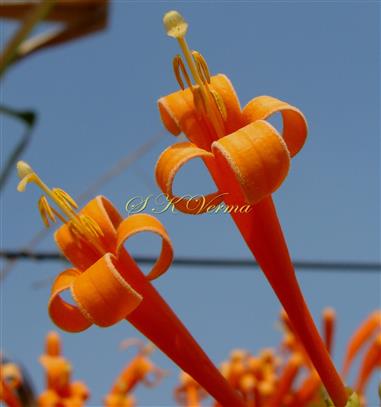
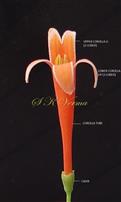
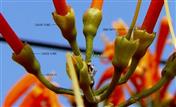


 and one small staminode-DSC08201.jpg)
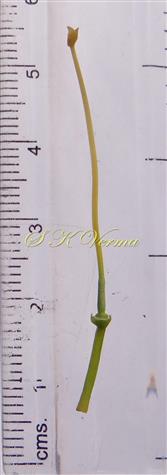
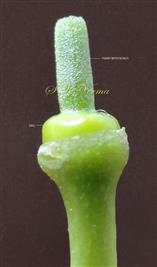
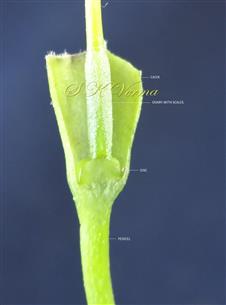



-DSC08249.jpg)

-DSC08252.jpg)





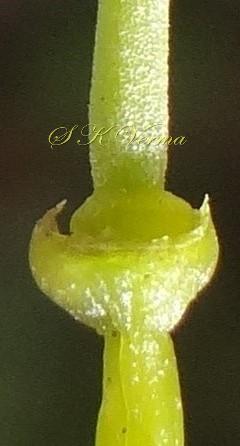

 and one small staminode-DSC08201.jpg)


